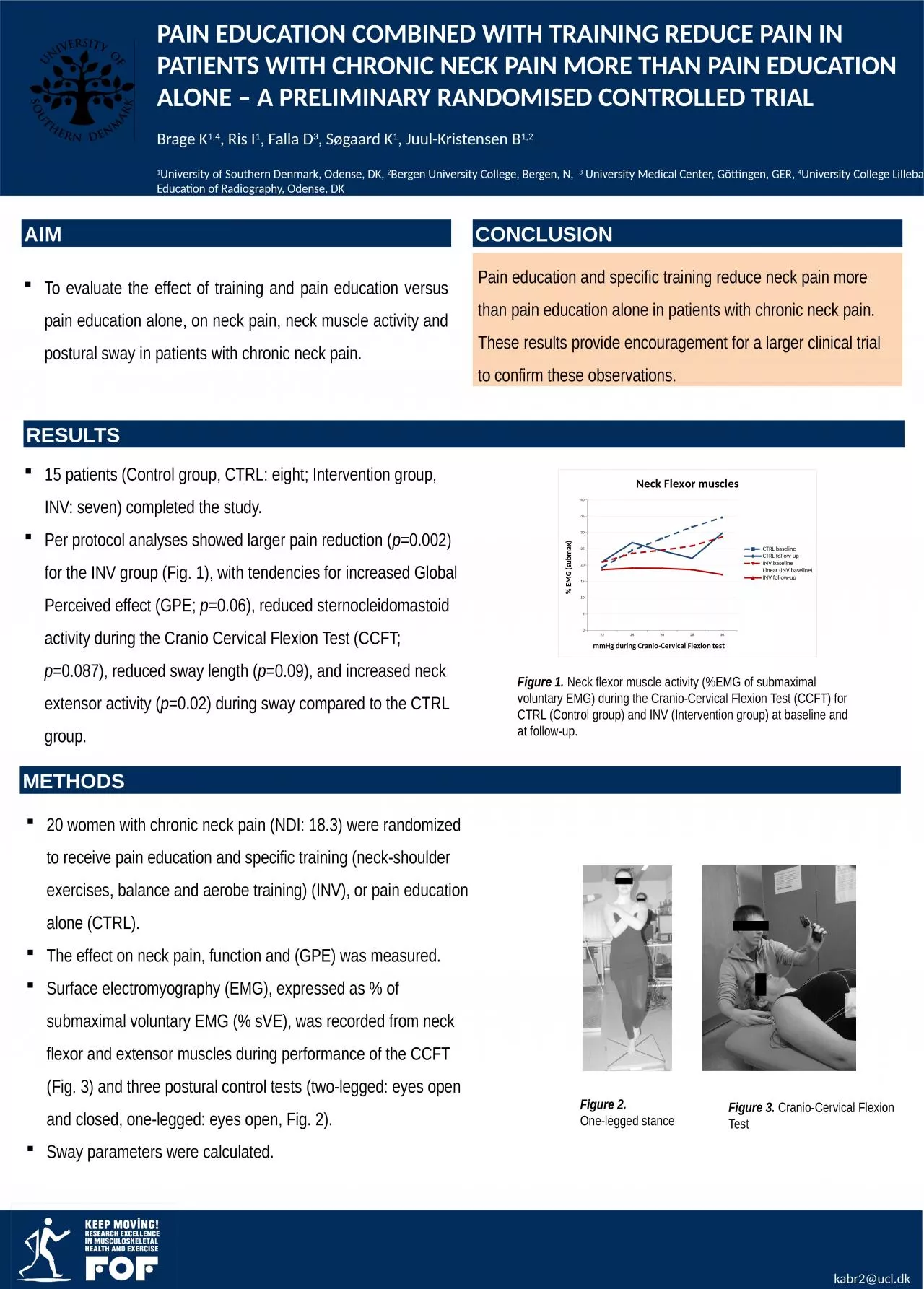

eight Intervention group INV seven completed the study Per protocol analyses showed larger pain reduction p 0002 for the INV group Fig 1 with tendencies for increased Global Perceived effect ID: 928592
Download Presentation The PPT/PDF document "15 patients (Control group, CTRL" is the property of its rightful owner. Permission is granted to download and print the materials on this web site for personal, non-commercial use only, and to display it on your personal computer provided you do not modify the materials and that you retain all copyright notices contained in the materials. By downloading content from our website, you accept the terms of this agreement.
Slide1
15 patients (Control group, CTRL: eight; Intervention group, INV: seven) completed the study. Per protocol analyses showed larger pain reduction (p=0.002) for the INV group (Fig. 1), with tendencies for increased Global Perceived effect (GPE; p=0.06), reduced sternocleidomastoid activity during the Cranio Cervical Flexion Test (CCFT; p=0.087), reduced sway length (p=0.09), and increased neck extensor activity (p=0.02) during sway compared to the CTRL group.
PAIN EDUCATION COMBINED WITH TRAINING REDUCE PAIN IN PATIENTS WITH CHRONIC NECK PAIN MORE THAN PAIN
EDUCATION
ALONE – A PRELIMINARY RANDOMISED CONTROLLED TRIALBrage K1,4, Ris I1, Falla D3, Søgaard K1, Juul-Kristensen B1,21University of Southern Denmark, Odense, DK, 2Bergen University College, Bergen, N, 3 University Medical Center, Göttingen, GER, 4University College Lillebaelt, Education of Radiography, Odense, DK
To evaluate the effect of training and pain education versus pain education alone, on neck pain, neck muscle activity and postural sway in patients with chronic neck pain.
kabr2@ucl.dk
AIM
CONCLUSION
RESULTS
METHODS
20 women
with chronic neck pain
(NDI: 18.3) were randomized to receive pain education and specific training (neck-shoulder exercises, balance and aerobe training) (INV), or pain education alone (CTRL). The effect on neck pain, function and (GPE) was measured. Surface electromyography (EMG), expressed as % of submaximal voluntary EMG (% sVE), was recorded from neck flexor and extensor muscles during performance of the CCFT (Fig. 3) and three postural control tests (two-legged: eyes open and closed, one-legged: eyes open, Fig. 2). Sway parameters were calculated.
Pain education and specific training reduce neck pain more than pain education alone in patients with chronic neck pain. These results provide encouragement for a larger clinical trial to confirm these observations.
Figure 2
. One-legged stance
Figure 1. Neck flexor muscle activity (%EMG of submaximal voluntary EMG) during the Cranio-Cervical Flexion Test (CCFT) for CTRL (Control group) and INV (Intervention group) at baseline and at follow-up.
Figure 3. Cranio-Cervical Flexion Test